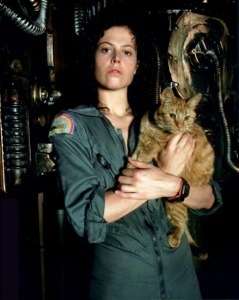According to Save the Cat author Blake Snyder, one of the four keys to writing a winning log-line (elevator pitch) for a screenplay is generating “a compelling mental picture that promises more.” Part of this step is visualizing the movie poster.
As novelists, we don’t need a poster (yet), but we do need a book jacket.
I’m totally getting WAY ahead of myself here, but in addition to Save the Cat, I got two other very closely related messages in the past few days, so I’m pretty sure it’s a sign from the universe to design some cover art.
First, I was sent an article on The Point of the Paperback from my book-loving friend American Book Junkie. There are some really great looking books here, and I found that in almost every case I was more drawn to the hardcover than the paperback edition. Super fun article! If looking at book covers is your idea of eye candy, you really need to see it. I practically squealed.
Then Overthinking the “Movie Tie-In Edition” Book Cover Phenomenon showed up on the Misanthropology101 blog. A favorite book of mine, Cloud Atlas, which was turned into a “meh” movie, and I agree: the poster does not work as a book jacket.
To be honest, thinking about what the book cover will look like feels a bit like hanging a decorative shelf on an unpainted wall in a half-built house. But since I’m on break from writing this week to focus on reading, organizing notes, and getting the big picture perspective, why not have a bit of fun? It’s kind of exciting because it makes me think, “I’m really doing this!”
Punk has an awesome concept for it. He even drew up a picture. I like it so much I think it might actually be the winning look for my book. So I’ll keep it a secret for now. In lieu of sharing it, here are a few book jackets that have lured me in over the years. If it hadn’t been for the cover art, I may not have even read some of these:
Yep, I had a sweet little helper choosing favorites today. Good thing, too— he added a splash of color to an otherwise bland looking selection. (I must be in a yellow frame of mind.)
How about you guys— how do you choose your covers? Do you even think about cover art at all while writing the story, or do you wait to hang decorative shelves until after the house is painted?










